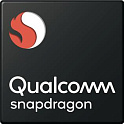 MediaTek Helio X27
MediaTek Helio X27
 Samsung Exynos 5 Octa
Samsung Exynos 5 Octa
Comparision MediaTek Helio X27 vs Samsung Exynos 5 Octa
Grade
Top specs and features
AnTuTu test score
Memory frequency
4G support
Technological process
GPU base clock
Description
MediaTek Helio X27 - 10 - core processor, clocked at 1600 GHz. Samsung Exynos 5 Octa is equipped with There is no data cores clocked at There is no data MHz. The maximum frequency of the first processor is There is no data GHz. The second is capable of overclocking to There is no data GHz.
MediaTek Helio X27 consumes There is no data Watt and Samsung Exynos 5 Octa There is no data Watt.
As for the graphics core. MediaTek Helio X27 is equipped with There is no data. The second uses There is no data. The first operates at a frequency of 880 MHz. Samsung Exynos 5 Octa operates at 533 MHz.
Regarding processor memory. MediaTek Helio X27 may support DDR3. The maximum memory capacity is 4 GB. And its throughput is There is no data GB/s. Samsung Exynos 5 Octa works with DDRThere is no data. The maximum amount of memory can be There is no data. At the same time, the throughput reaches 12.8 GB/s
Let's move on to performance testing in benchmarks. In the AnTuTu benchmark, MediaTek Helio X27 scored 97013 points out of 988414 possible points. In the GeekBench 5 (Multi-Core) benchmark, it scored 1146 points out of a possible 16511 points. Samsung Exynos 5 Octa in Antutu received There is no data points. And GeekBench 5 (Multi-Core) scored There is no data points .
Results.
Why MediaTek Helio X27 is better than Samsung Exynos 5 Octa
- Technological process 16 nm против 28 nm, less by -43%
- GPU base clock 880 MHz против 533 MHz, more on 65%
- Number of threads 10 против 4 , more on 150%
- DirectX 11 против 9.3 , more on 18%
- OpenCL Version 1.2 против 1.1 , more on 9%
- FLOPS 121 TFLOPS против 0.0482 TFLOPS, more on 250937%
MediaTek Helio X27 vs Samsung Exynos 5 Octa: highlights


Interfaces and communications
Memory specification
Performance
Benchmark tests
FAQ
How many points does MediaTek Helio X27 and Samsung Exynos 5 Octa score in benchmarks?
In the Antutu benchmark, MediaTek Helio X27 scored 97013 points. Samsung Exynos 5 Octa scored There is no data points.
How many cores does the processor have?
MediaTek Helio X27 has 10 cores. Samsung Exynos 5 Octa has There is no data cores.
Does the processor support NAVIC?
MediaTek Helio X27 There is no data.
How many transistors are there in processors?
MediaTek Helio X27 has There is no data million transistors. Samsung Exynos 5 Octa has There is no data million transistors.
What GPU is installed on MediaTek Helio X27 and Samsung Exynos 5 Octa?
MediaTek Helio X27 uses There is no data. Processor Samsung Exynos 5 Octa has graphics core There is no data installed.
How fast are the processors?
MediaTek Helio X27 is clocked at 1600 MHz. Samsung Exynos 5 Octa operates at There is no data MHz.
What kind of RAM is supported?
MediaTek Helio X27 supports DDR3. Samsung Exynos 5 Octa supports DDRThere is no data.
What is the maximum frequency of processors?
MediaTek Helio X27 has a maximum frequency of There is no data Hz. The maximum frequency for Samsung Exynos 5 Octa reaches There is no data GHz.
How much energy do they consume?
The power consumption of MediaTek Helio X27 can be up to There is no data Watts. Samsung Exynos 5 Octa has up to There is no data Watts.


















